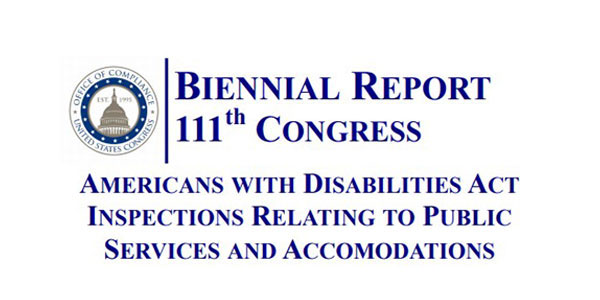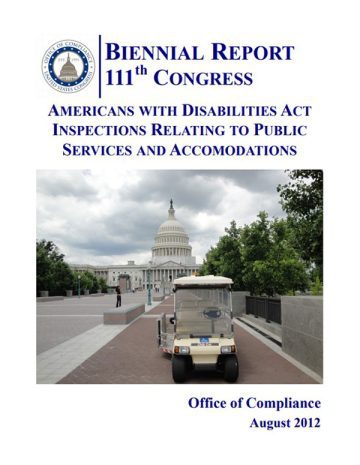STATEMENT FROM THE GENERAL COUNSEL
Making Real the Right of Public Access for Persons with Disabilities
The First Amendment to the Constitution mandates that Congress shall make no law abridging the right of the people to petition the Government for a redress of grievances. In 1995, Congress adopted the Congressional Accountability Act and applied to the legislative branch Titles II and III of the Americans with Disabilities Act to individuals with disabilities. In so doing, Congress and its instrumentalities assumed the obligation to remove barriers to access and to provide protection against discrimination to qualified individuals with a disability. By this action, such persons are guaranteed access to their legislators, to the buildings in which they and other government officials are housed, and to government hearings and programs. This guarantee makes real to those with disabilities the ability to exercise their rights to petition their government – a fundamental element of democracy.
As the accompanying Report illustrates, since its inception, this Office has been working with the Architect of the Capitol and other stakeholders to make this promise of full accessibility to persons with disabilities a reality. Over the years, considerable progress has been achieved by the Office of the Architect of the Capitol, especially in installing in legislative branch buildings improved signage and emergency escape routes for those with disabilities. During the 111th Congress, we focused on identifying and removing access barriers on pathways to building entrances and began to identify barriers in public restrooms. Using new inspection software, we were able to provide more comprehensive and precise measurements of ADA deficiencies that will assist employing offices to design appropriate and less costly means for eliminating barriers.
Despite the progress that has been made, we are not satisfied with the current pace and scope of our inspections or the way identified barriers currently are being remediated. Given the very limited resources devoted to achieving the full range of ADA objectives, we will continue to work closely with stakeholders to improve processes in our shared responsibilities for assuring that the legislative branch is barrier-free to persons with disabilities.

